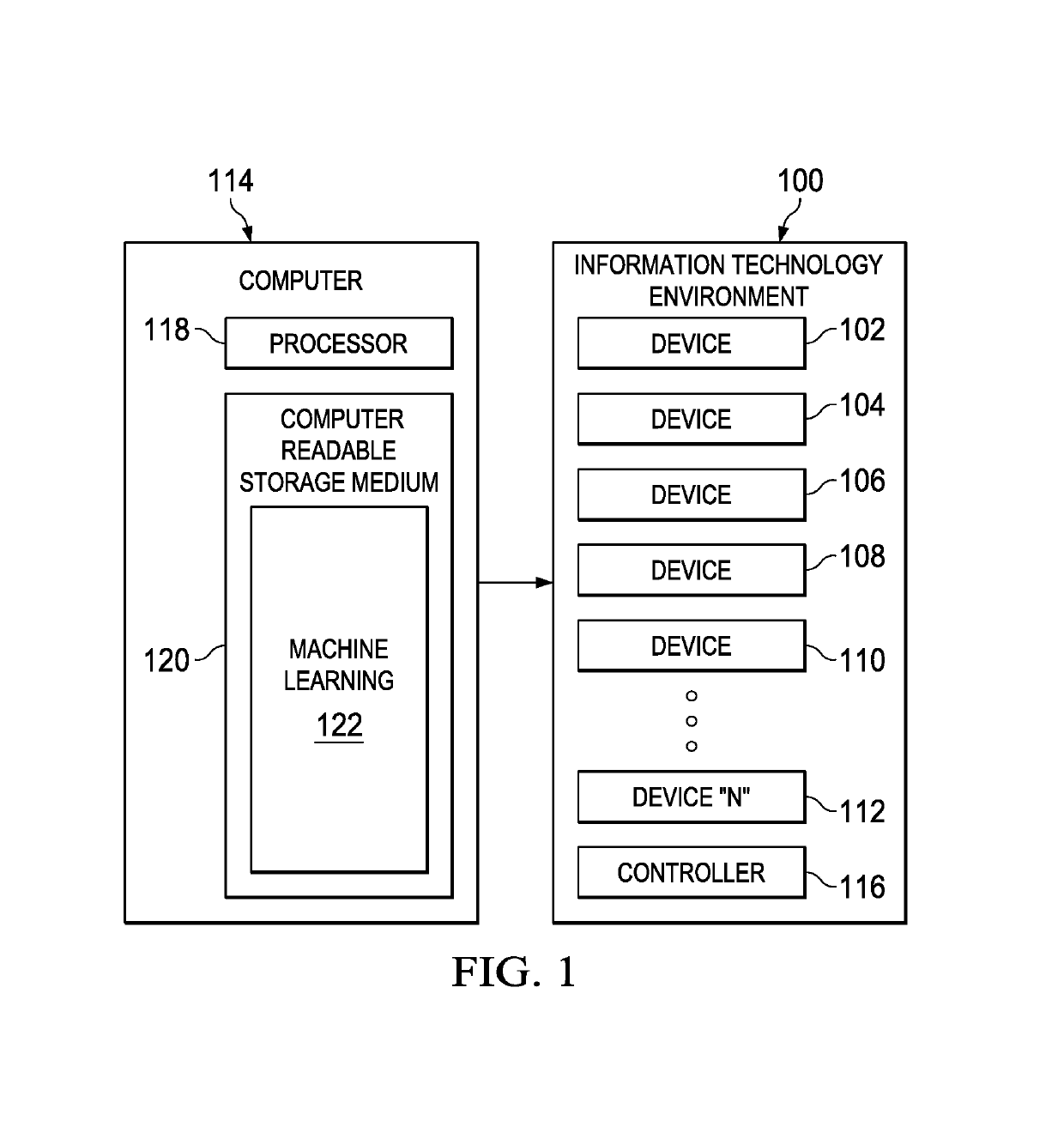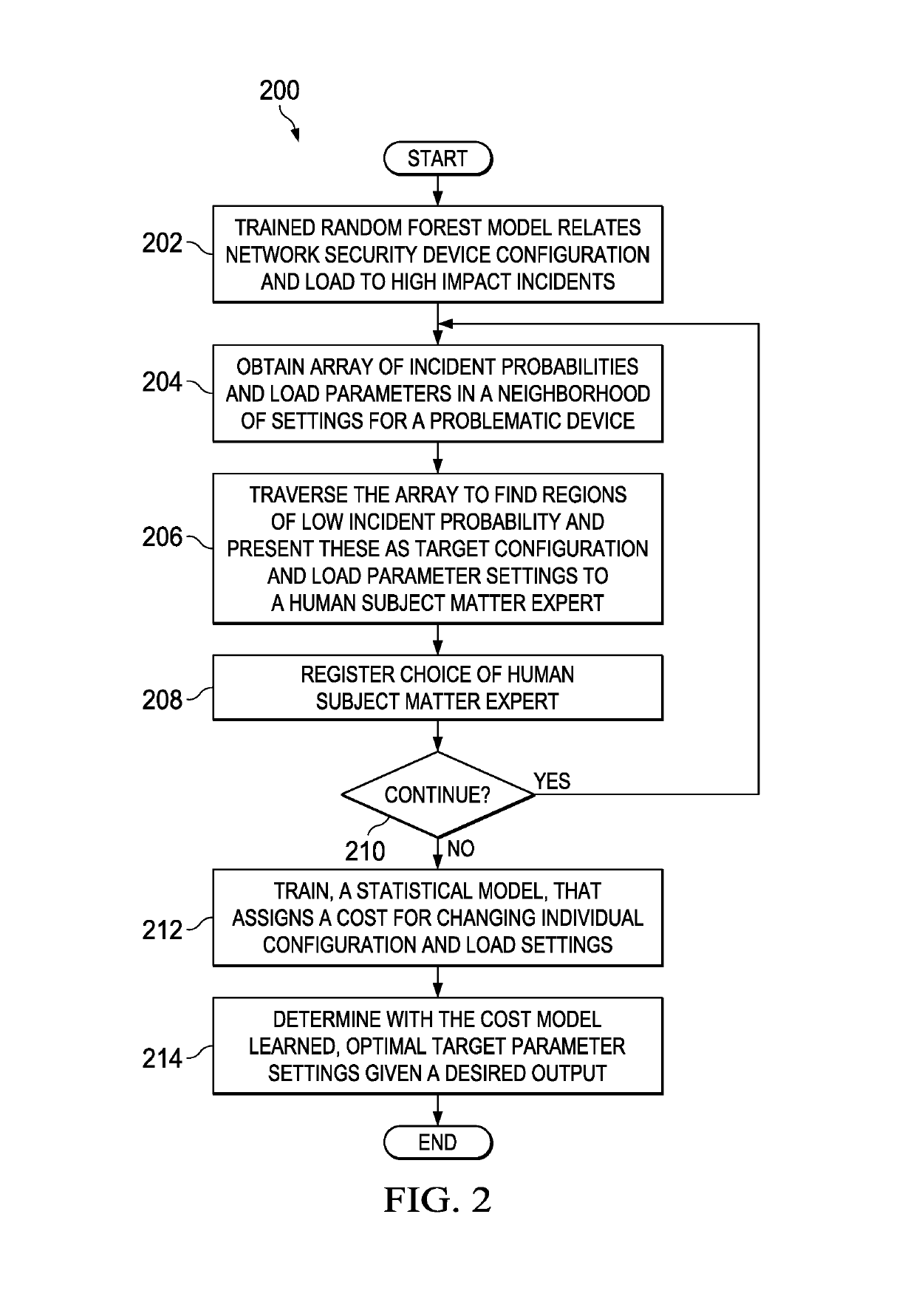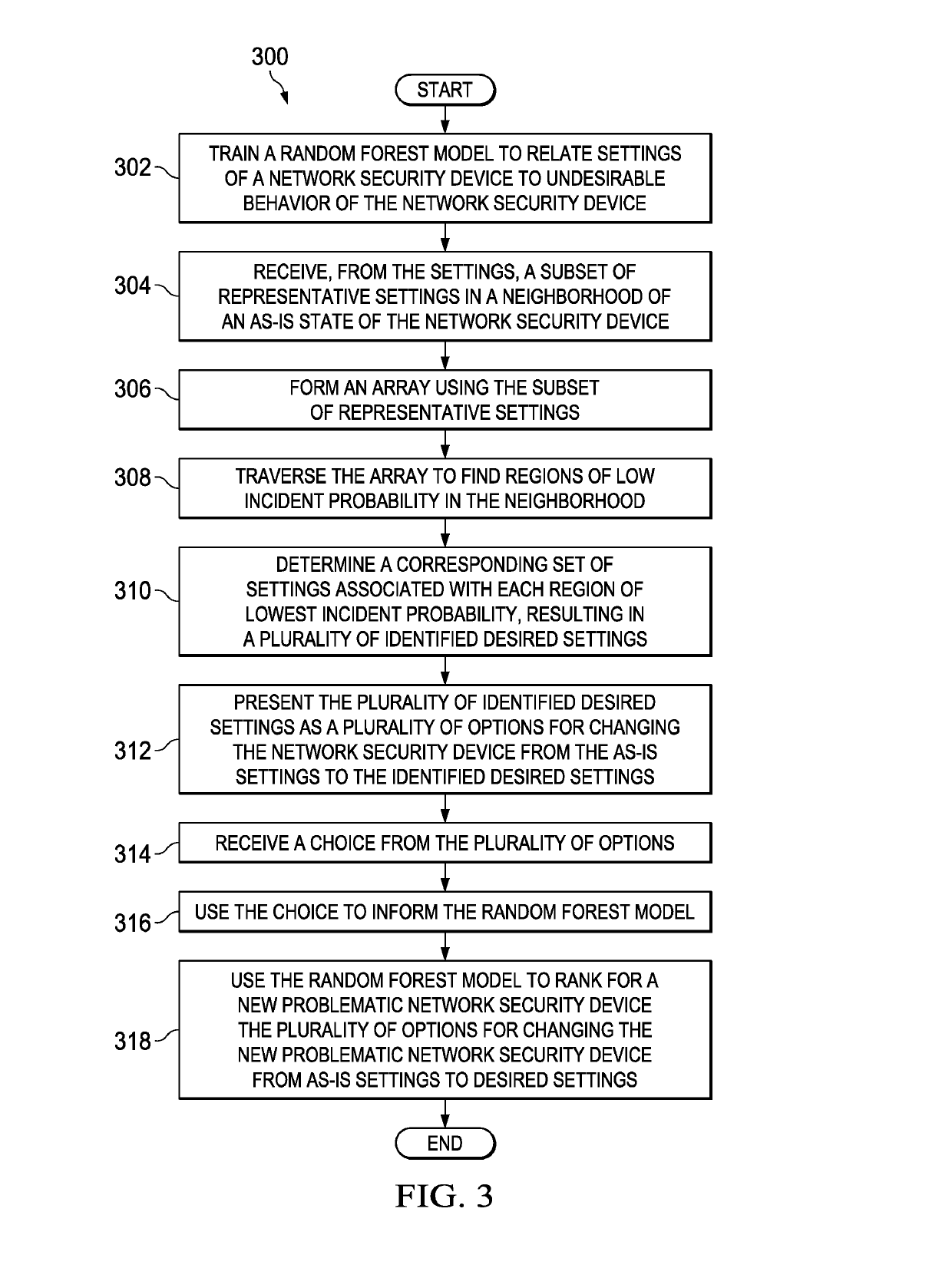Deriving optimal actions from a random forest model
a random forest and optimal action technology, applied in the field of computer security, can solve the problems of network bandwidth consumption, hardware device failures that are not acceptable, and hardware devices that have somewhat unpredictable failure rates, and achieve cost-effective effects
- Summary
- Abstract
- Description
- Claims
- Application Information
AI Technical Summary
Benefits of technology
Problems solved by technology
Method used
Image
Examples
Embodiment Construction
[0010]The illustrative embodiments recognize and take into account that additive tree models (ATMs) such as random forest models or gradient boosting trees are seen as the best off-the-shelf classifiers in terms of accuracy and stability. However, ATMs lack both comprehensibility, that is the ability for a human to understand the learned relations, and actionability, that is the ability to derive the best set of actions to optimize the output.
[0011]On the other hand, simple models, such as single decision trees, suffer from higher variance (overfitting) and consequently lower accuracy when applied to unseen test data and lower stability given small variations in the input training data. However, if not too deep or complex, they can be interpreted by a human. In addition, actions can be derived that maximize the expected profit. However, the simple models may not produce the best results.
[0012]Thus, the illustrative embodiments provide for a method and implementation to extract compr...
PUM
 Login to View More
Login to View More Abstract
Description
Claims
Application Information
 Login to View More
Login to View More - R&D
- Intellectual Property
- Life Sciences
- Materials
- Tech Scout
- Unparalleled Data Quality
- Higher Quality Content
- 60% Fewer Hallucinations
Browse by: Latest US Patents, China's latest patents, Technical Efficacy Thesaurus, Application Domain, Technology Topic, Popular Technical Reports.
© 2025 PatSnap. All rights reserved.Legal|Privacy policy|Modern Slavery Act Transparency Statement|Sitemap|About US| Contact US: help@patsnap.com



